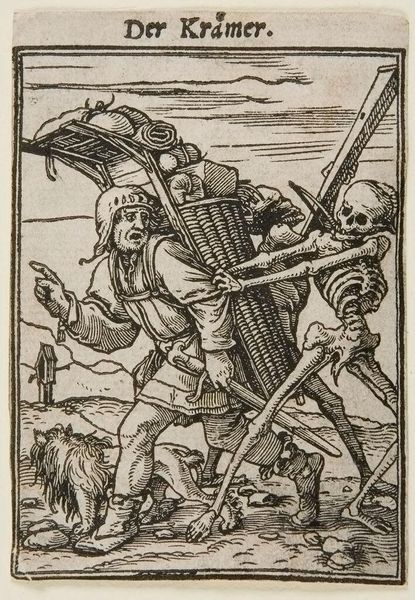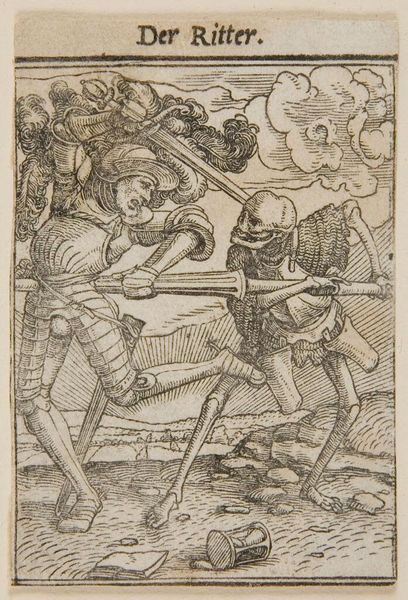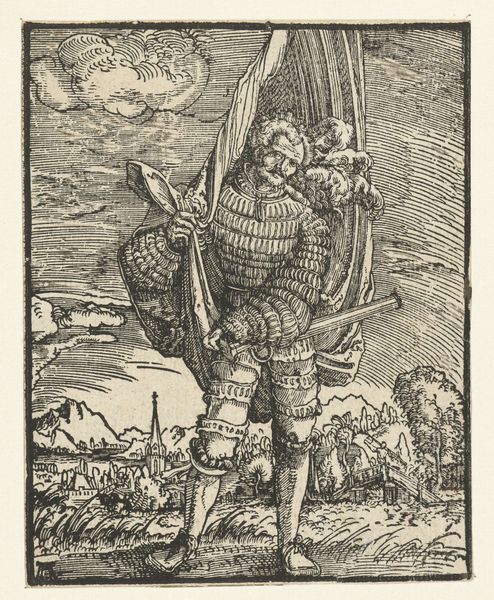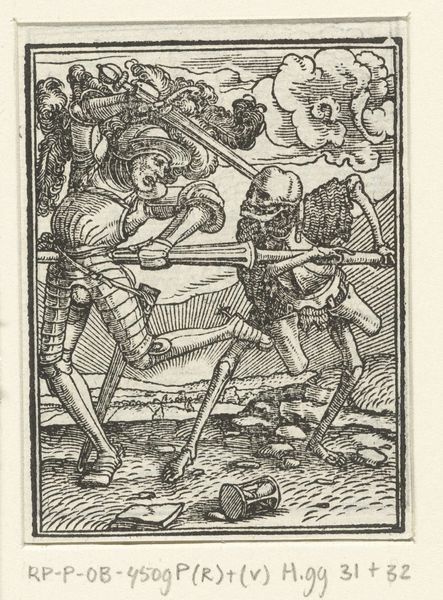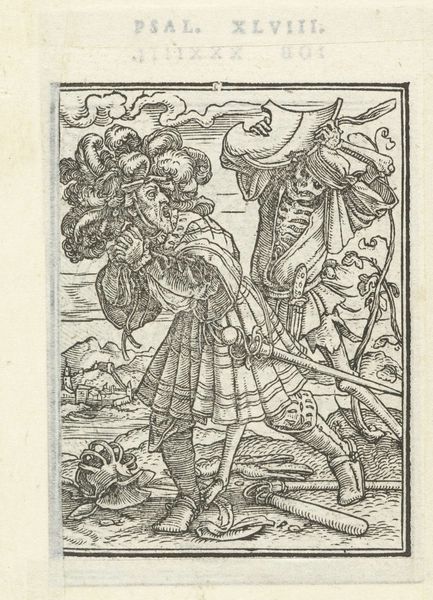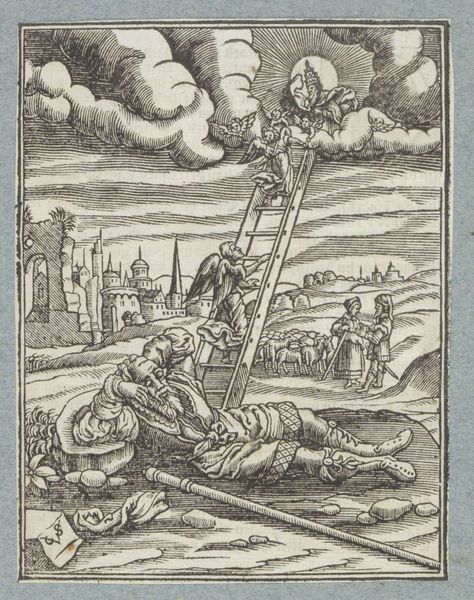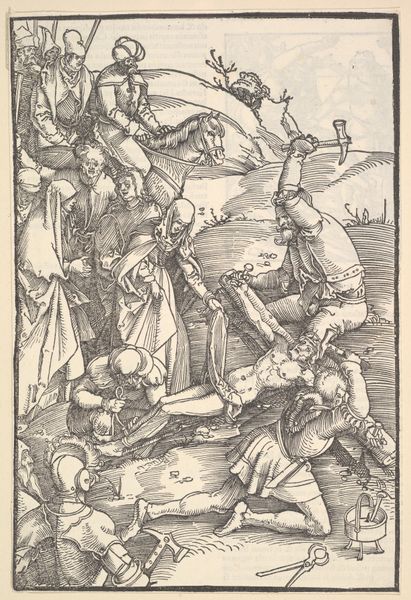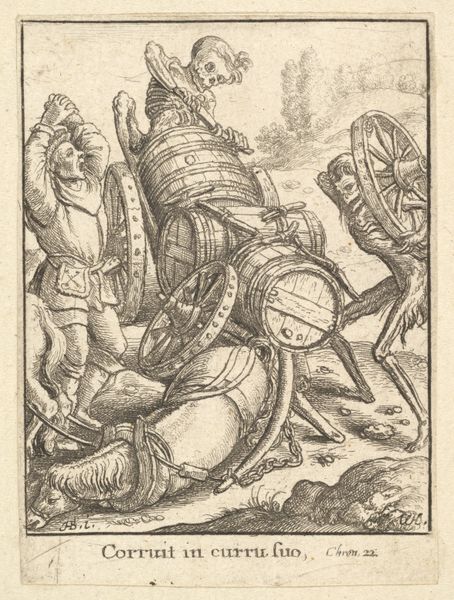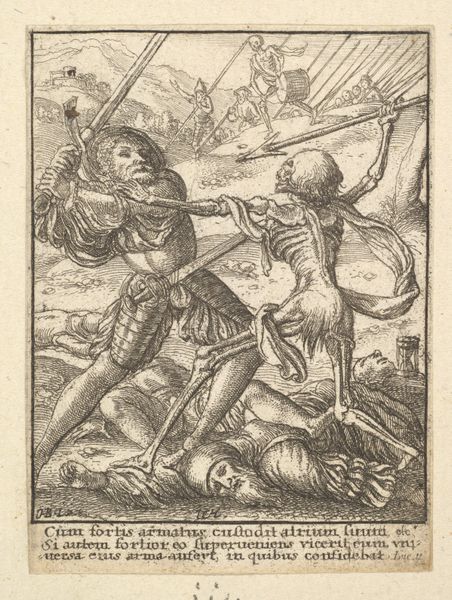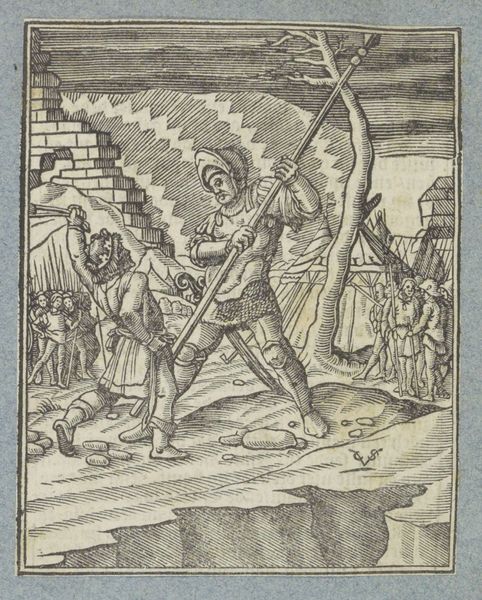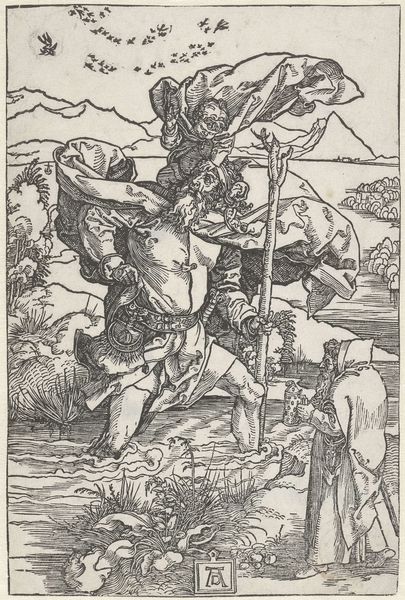
drawing, print, ink, woodcut, engraving
#
portrait
#
drawing
#
medieval
#
allegory
#
narrative-art
#
pen drawing
# print
#
pen illustration
#
figuration
#
ink line art
#
ink
#
woodcut
#
line
#
genre-painting
#
history-painting
#
northern-renaissance
#
engraving
Dimensions: height 65 mm, width 50 mm
Copyright: Rijks Museum: Open Domain
Curator: Gosh, there's an awful lot crammed into this tiny image! It feels almost feverish. What do you make of its density, would you say? Editor: The chaos is wonderfully deliberate. We're looking at "The Merchant and Death" or, as it's sometimes known, "Marskramer en de Dood", a drawing done in ink and woodcut, engraved by Hans Holbein the Younger somewhere between 1524 and 1538. What pulls you in? Curator: Well, this skeletal figure clawing at the merchant definitely steals the show, even though there’s so much detail elsewhere, it’s like Holbein wants us to confront death head-on—as though it’s a literal pickpocket in life's marketplace. A tad unsettling, to say the least! Editor: Absolutely. The skeletal figure is meant to echo universal understanding of the inevitable. We find depictions of merchants, objects related to trade and mortality in art around this time frequently. It speaks to cultural anxieties around trade, death, sin and worldliness at the end of the medieval period, and entering the Reformation in Europe. Holbein seems to really hone in on these concerns through sharp contrasts. Curator: The guy's got quite the heavy load! With all his goods, it makes me think, what's he even chasing, eh? Is it some earthly satisfaction, perhaps wealth that seems forever just out of reach? Editor: That relentless pursuit could symbolize humanity's wider obsession with material gain and worldiness versus something spiritual that transcends physical existence. What do you reckon that dog near the Merchant could be suggesting? Curator: Ah, now that is very telling indeed. Dogs usually signal loyalty or faithfulness. But I would go as far as arguing the dog symbolizes earthly attachment or that even death needs a companion! What do you reckon? Editor: Holbein encapsulates such an enormous sense of existential questioning in this tiny scene... all those different avenues one can explore! Curator: You know, revisiting this after chatting with you... the drama becomes richer, more playful almost. It seems that in spite of its dark themes, there is beauty in that acknowledgment that all worldly ambitions must end, but it's okay to laugh about it.
Comments
No comments
Be the first to comment and join the conversation on the ultimate creative platform.
